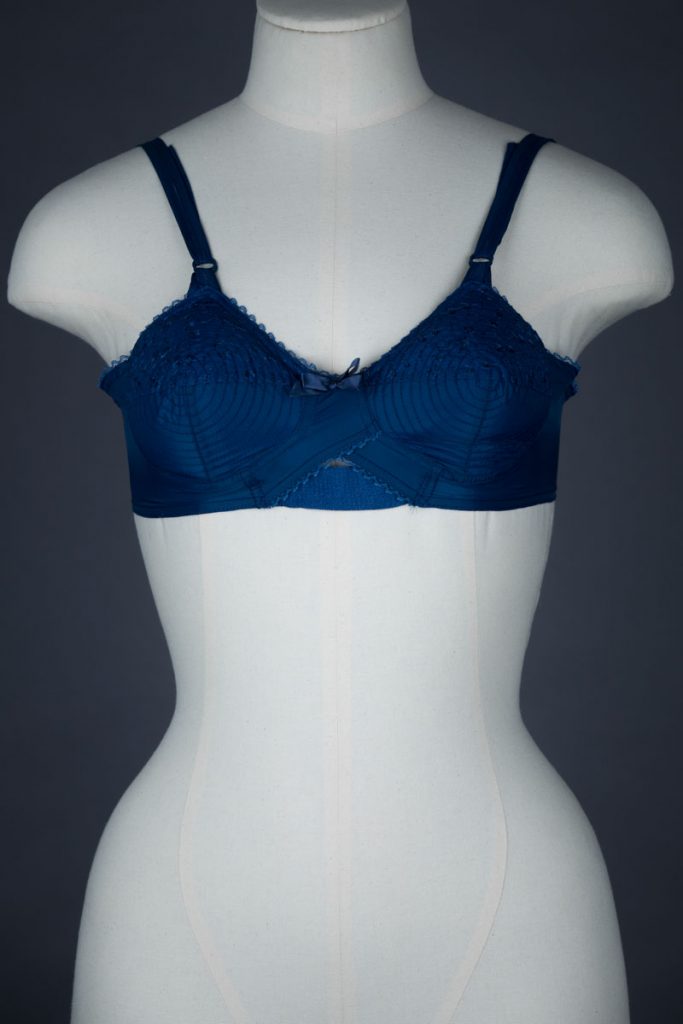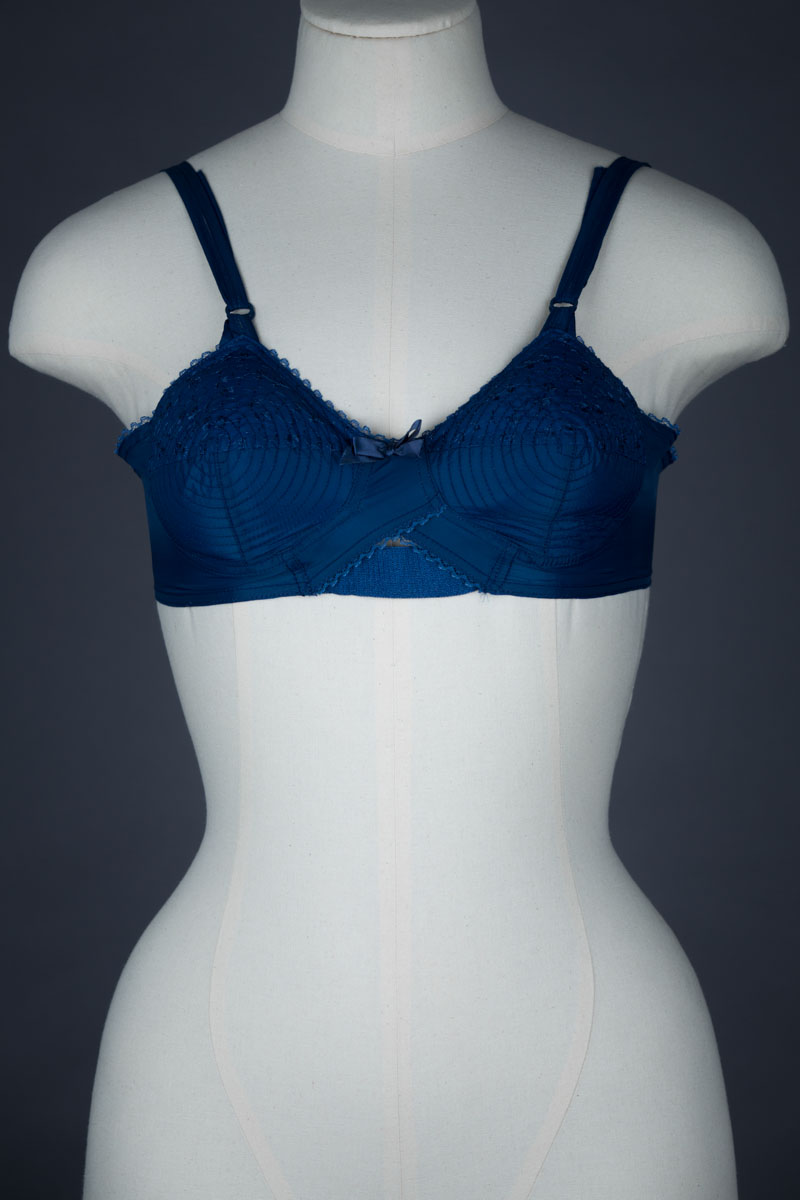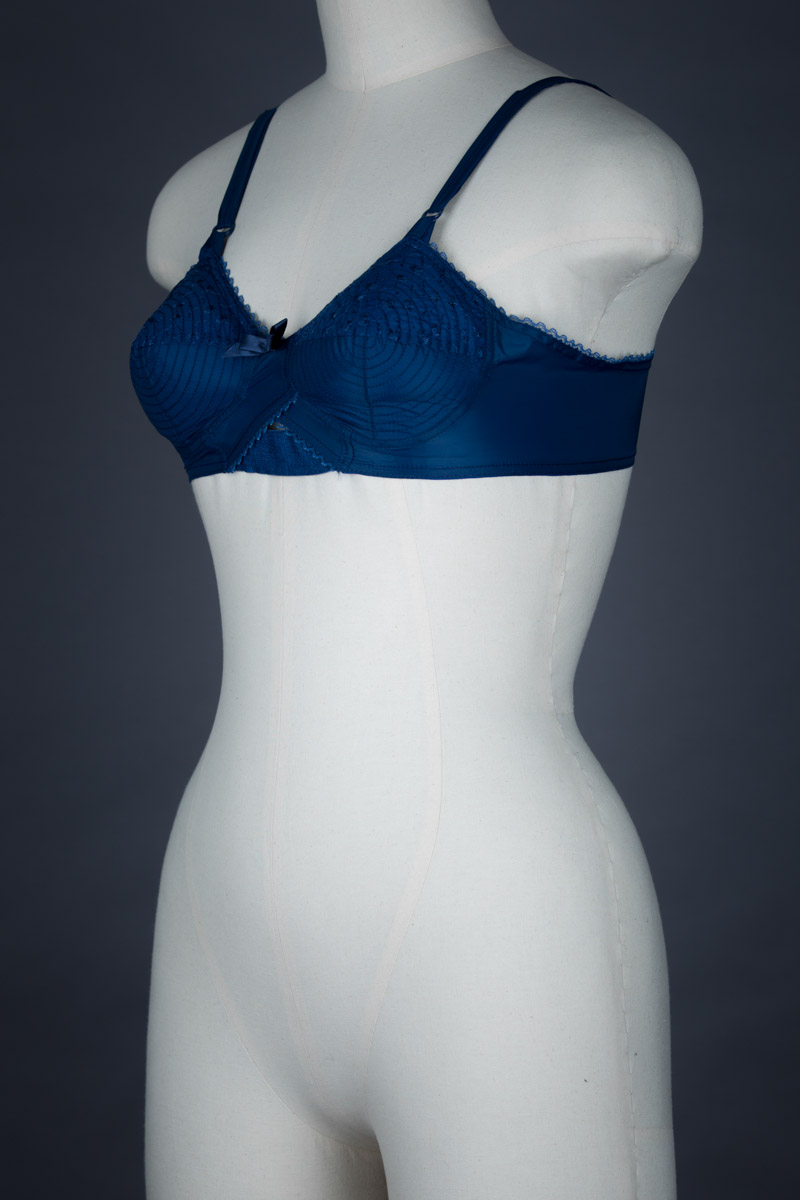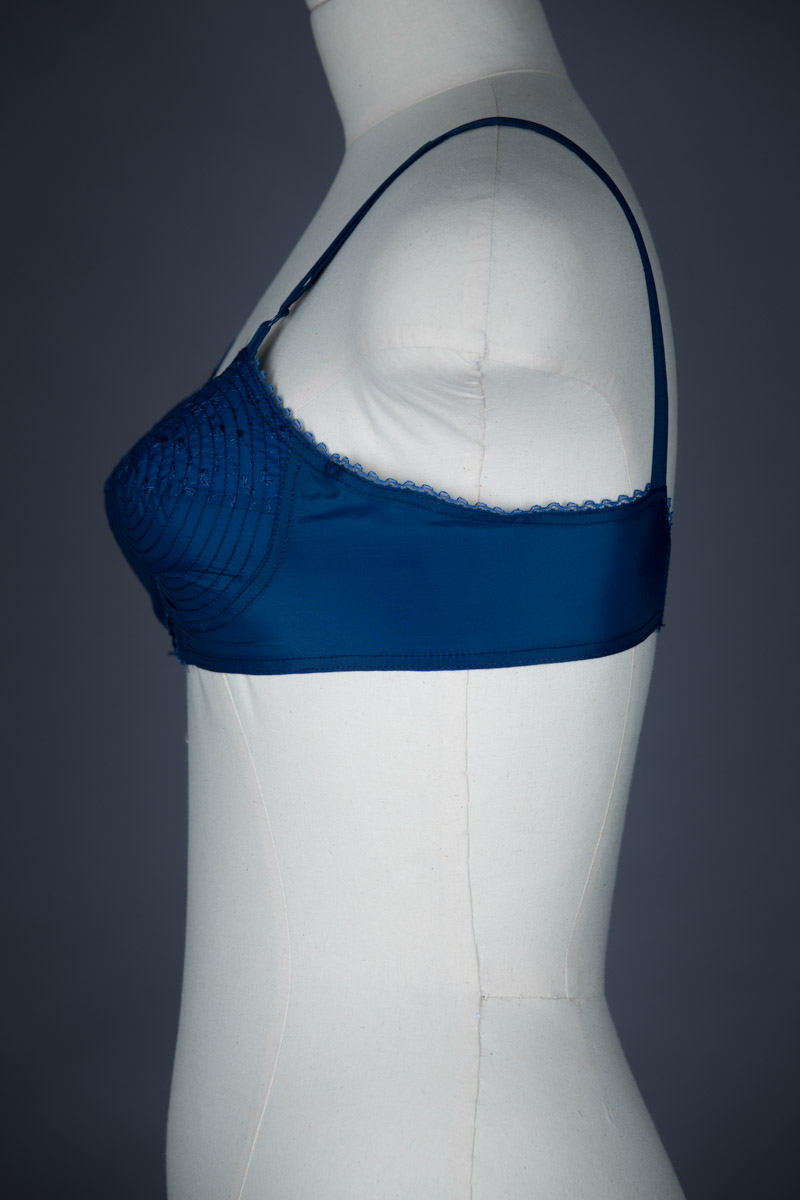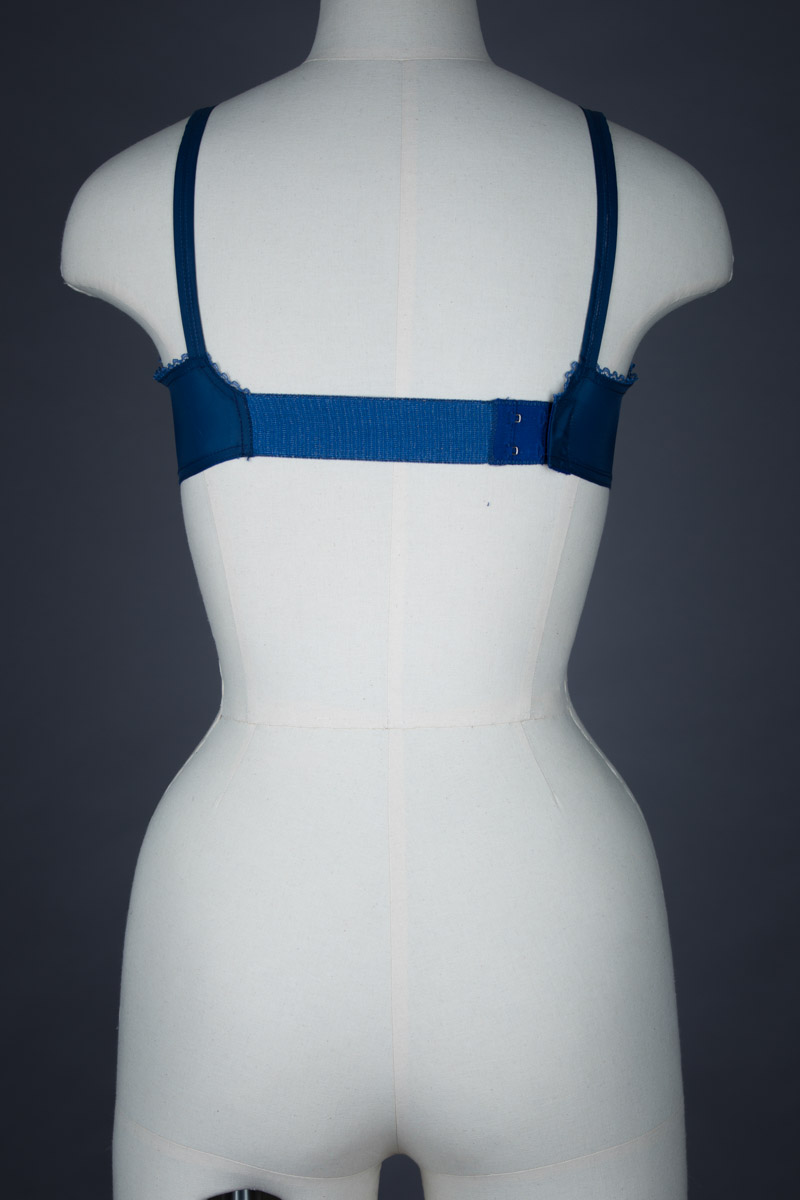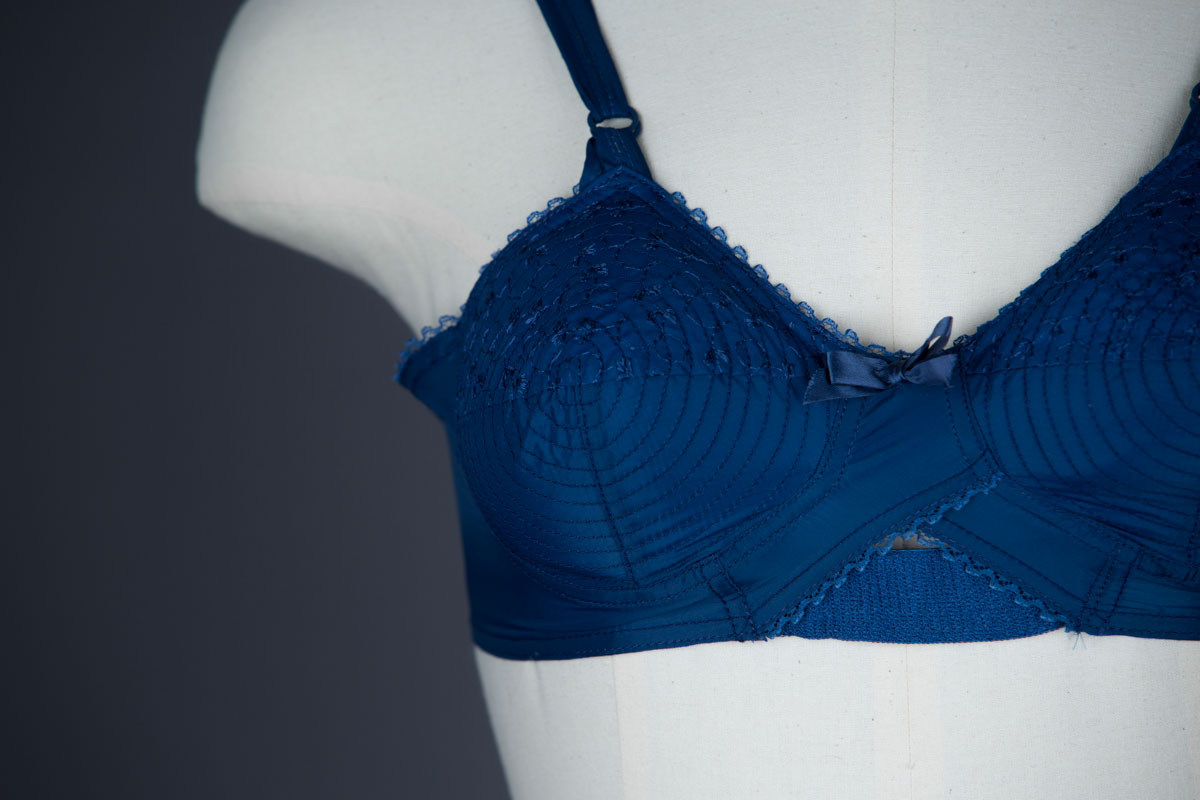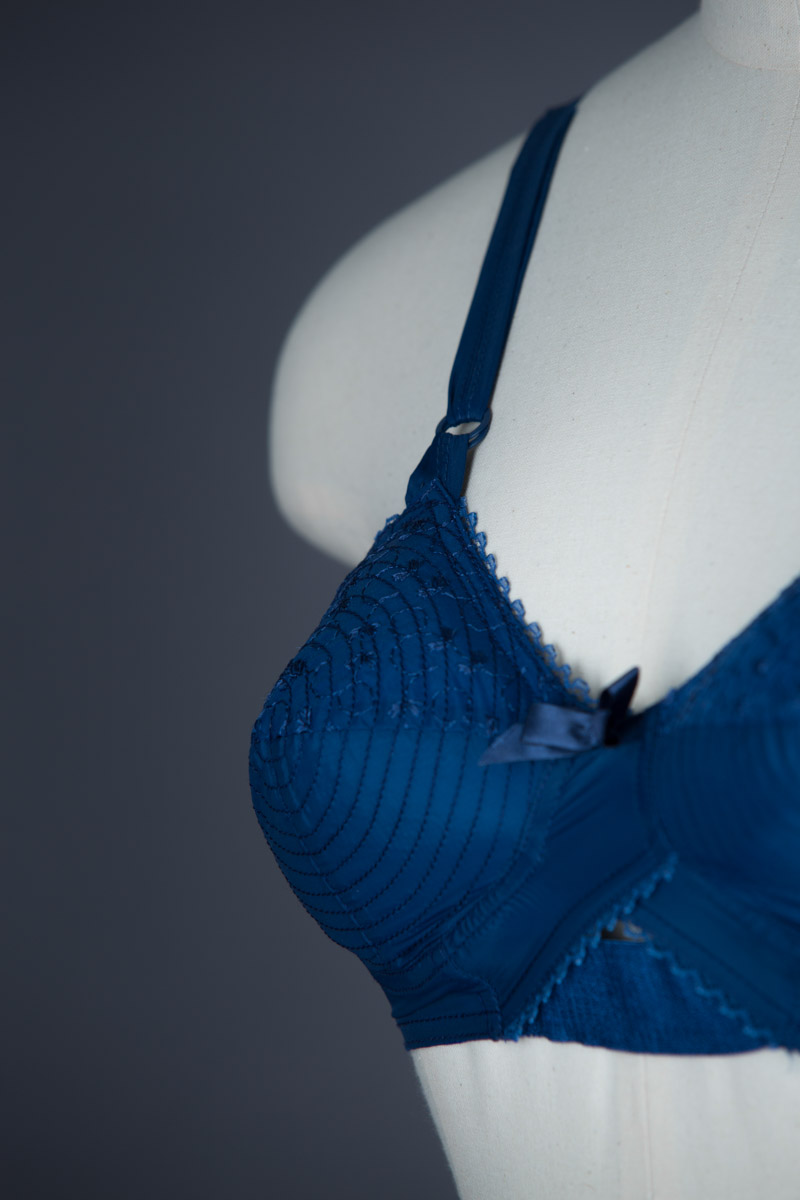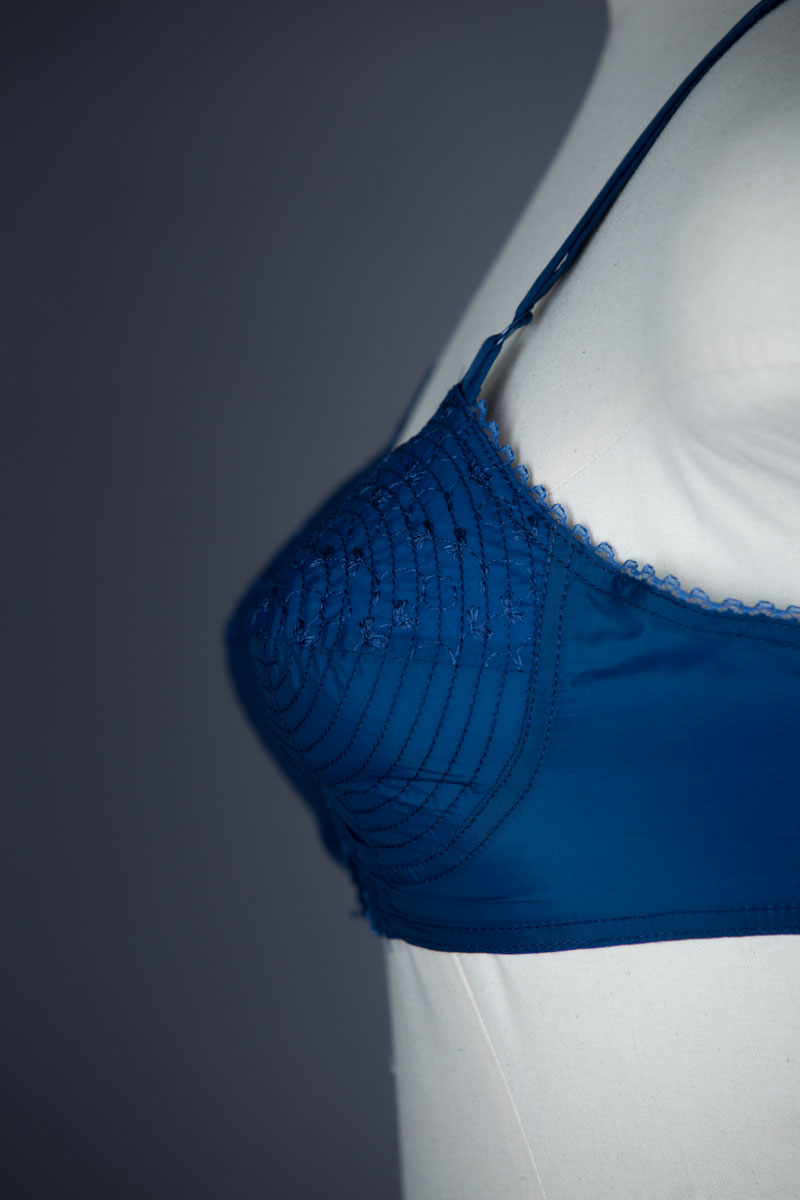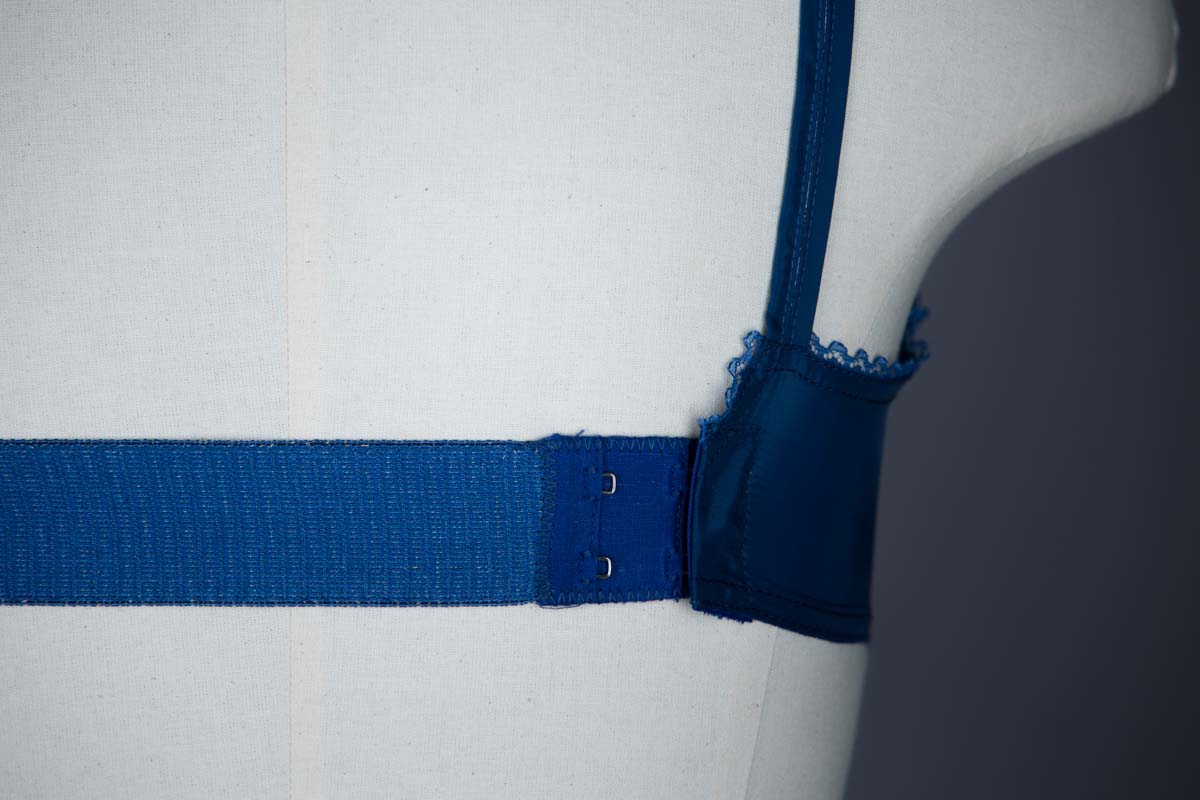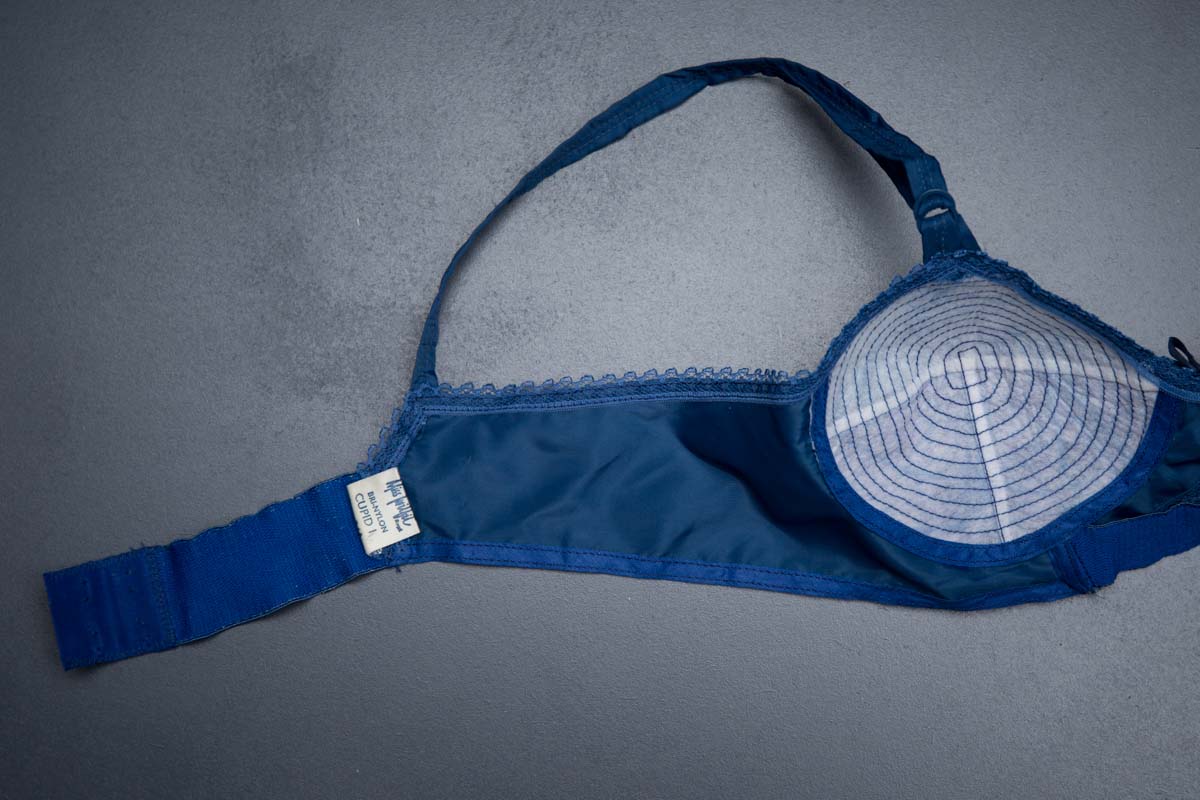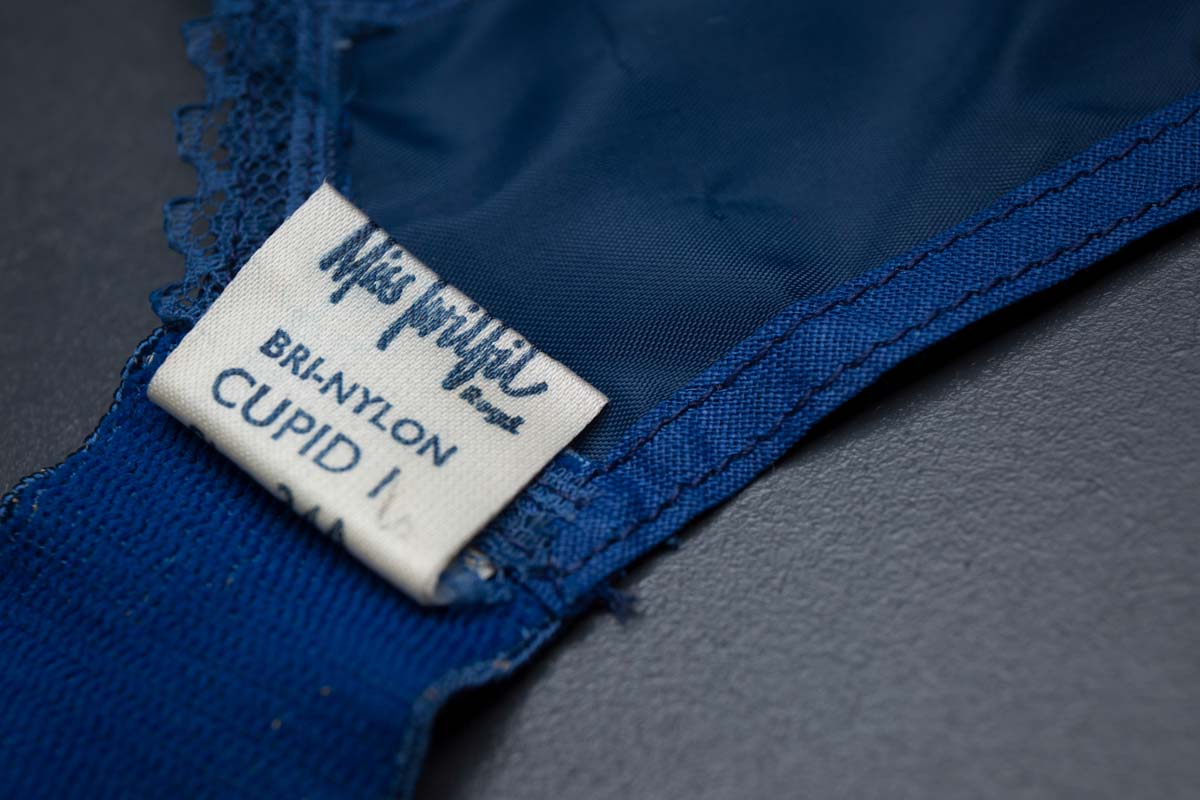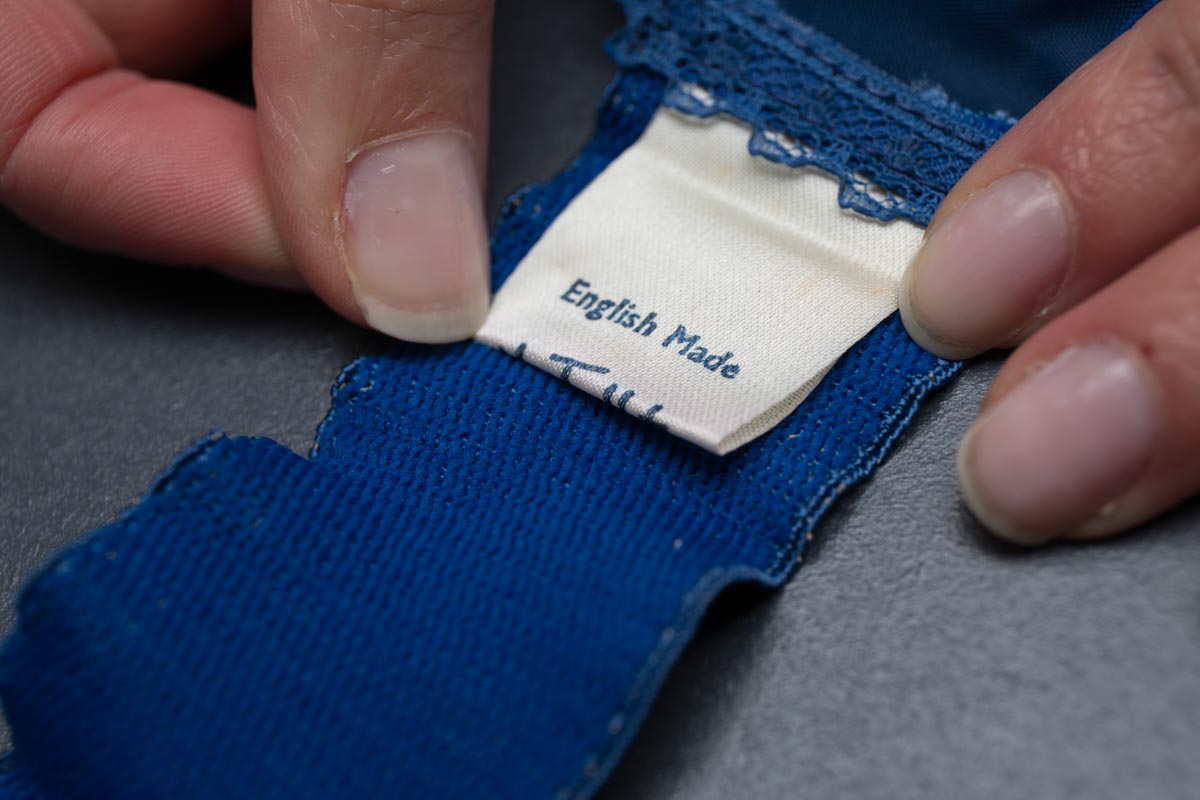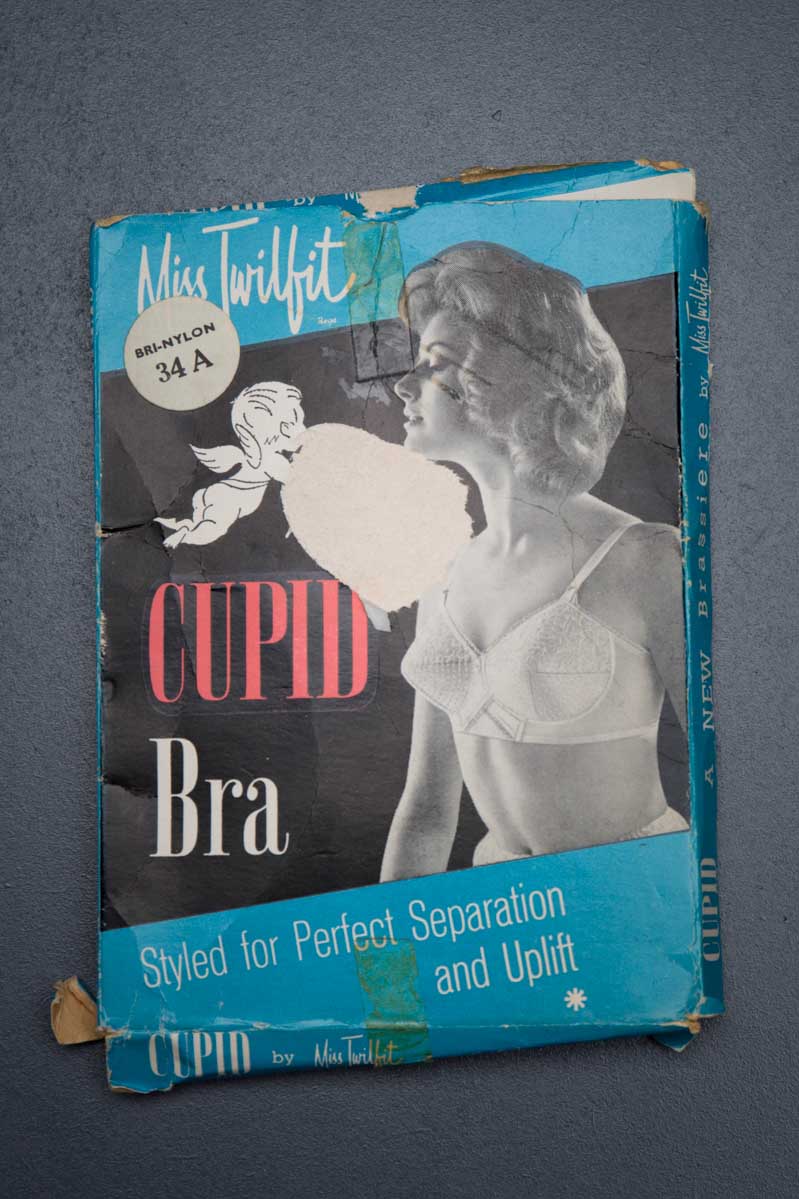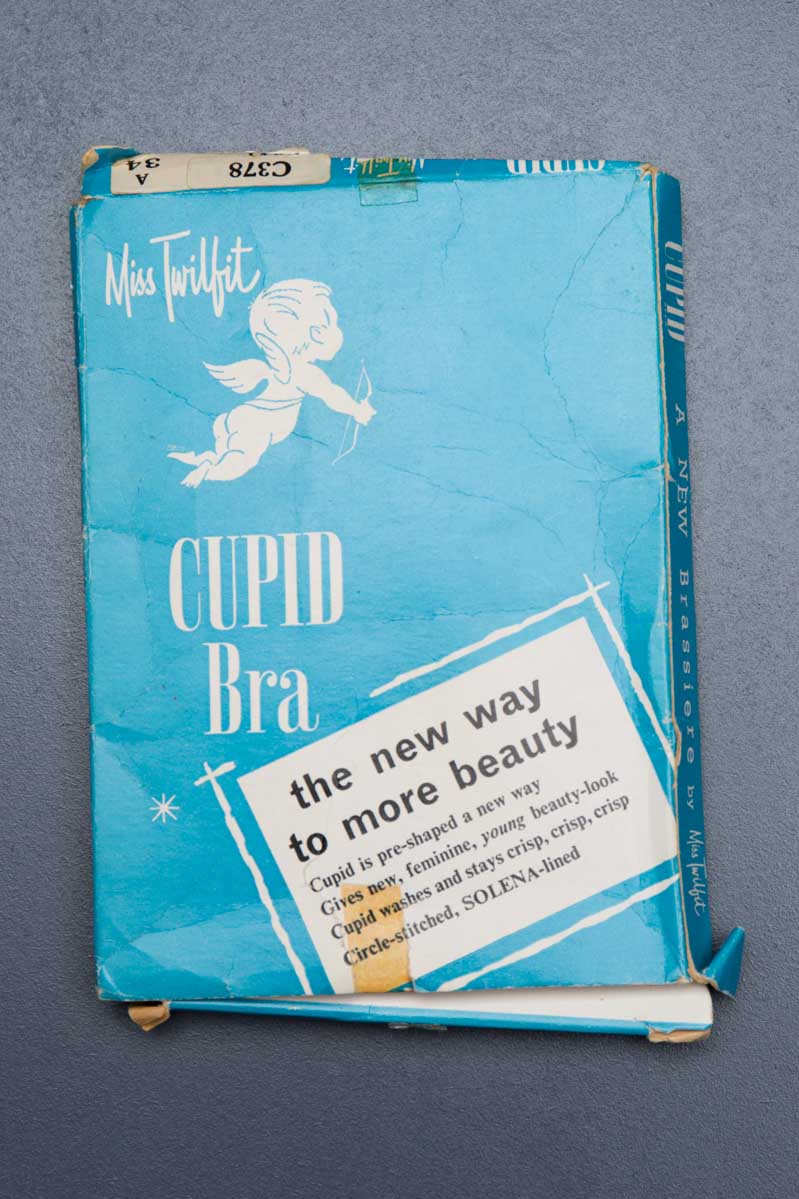Date: c. 1950s
Origin: Great Britain
Fabric: Bri-nylon
Brand: Miss Twilfit
This bra represents numerous technological advancements of the 1950s, including pre-forming, spiral stitching and the branded ‘Bri-Nylon’ fabric. The colour is also noteworthy for a period where tea-rose, white and black dominated.
The bra is constructed entirely on the machine. The cups have a 3-part construction in a combination of embroidered and plain nylon. They have been pre-formed into shape and spiral stitched. The cradle and wing are made of single layer nylon, with a crossover construction at the centre front, forming a keyhole with a small panel of elastic for fit flexibility. The neck edge of the garment is folded in and taped over with a nylon lace trim. The bottom edge of the garment is folded in and taped over with nylon bias tape.
The bra fastens with hooks and eyes at the right side back. A strip of elastic is sewn into the left hand side of the garment, giving a small amount of fit flexibility across the centre back. The shoulder straps are created out of a twin needle stitched nylon tube that are adjustable at two enamelled metal rings at the cup apex. The garment label states ‘English made / Miss Twilfit Regd. / BRI-NYLON / CUPID I / Size 34A’. The bra is finished with a single satin bow at the centre front.
A variety of different stitching techniques to reinforce the cups and provide uplift to the breasts were developed, starting with the spiral stitching of Hollywood Maxwell’s ‘Whirlpool’ brassiere in the US in 1935. Maiden Form introduced their Chansonette in 1938 which historian Jill Fields said (in her book An Intimate Affair: Women, Lingerie and Sexuality) ‘worked on a similar principle but created a circle out of spokelike sections […] Circle-stitched cups ultimately became so popular that special sewing machines with multiple needles were constructed to mass produce them’.
Nylon was introduced by Du Pont in 1939 and was initially used by hosiery and brassiere manufacturers in the United States, a country not yet involved in the Second World War. It was said that this strong yet fine completely man-made textile fibre would be able to make the stockings of the future indestructible – a claim that proved to be not completely achievable, but the overall benefits of using nylon remained clear and so demand grew even before the stockings were even available to buy. The name nylon was never patented by Du Pont and it was introduced as a generic fibre at its launch.
In the late 1950s and early 1960s, bra cups could be moulded into shape and lined in a new process called pre-forming, which gave a very structured and rigid appearance. Linings were often made from foam, with holes added to make it more breathable, or from quilted polyester wadding. This enabled women to achieve a fuller or less uneven look without the use of puffs or pads that were common in previous decades.
From the collection of The Underpinnings Museum
